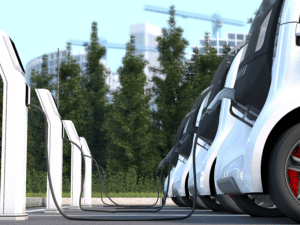Physical security in Class A commercial office buildings, banks, hotels or any high-profile piece of real estate is a key consideration for real estate developers as well as their corporate tenants. The primary driver for access control systems is to safeguard people and to protect physical and intellectual property from outside threats. More and more, access control also helps to mitigate internal threats as well such as thefts, loss of property, workplace violence, and unauthorized access to high risk areas such as labs and data centers. To make matters more complicated, new regulations like GDPR in Europe, place a strong emphasis on protecting people’s personal data which is often collected to confirm identities.
When looking for a new commercial building security system – whether it is for a single floor, entire building, or a network of buildings around the block or around the globe- it is important to consider the following:
IT friendliness
An access control system is the brain of any security management system, and in a real estate world bursting with IoT-enabled devices, it is key for the system to easily connect with these systems in a cybersecure way. When an access control system is “IT friendly”, it should easily integrate with business systems in order to make routine business operations and workflow processes more efficient, convenient for employees and secured. Access control systems should work seamlessly with staff identity management systems, visitor management systems and processes, staff shift rosters, etc. It should also allow for access to business information through an IT login that is managed through the access control credentials. With an “IT friendly” access control system, IT managers can rest assured that the system can utilize their network with low risk of vulnerability to the business information.
Let’s look at a practical example of a newly hired employee. When an employee is onboarded, they are likely to be added to the company directory by the HR team and they will be assigned a work area in the building. They may even be given security clearance to a data center or other secure area during daytime hours. Access control systems must be capable to integrate with the HR system to offer the new employee building access on his or her first day of work and to provide proper access rights to various spaces in the building where the employee is expected to work. The access control system should work with the HR system and staff shift rosters to known when and where an employee should be allowed within the site.
Tenant friendliness
Security management systems must also be tenant friendly to accommodate the various occupant access levels in the building such as common areas, cafeterias, washroom facilities and workout rooms. An example of a tenant-friendly building would be one with a bank as a tenant. Bank employees are given a secure ID card that gives them access to certain parts of the building and limited access to spaces such as vaults, trading floors and other high security zones. In this scenario, integration with business systems is critical in the event of employee departures and changes in access status. Bank customers should be able to come and go through common areas with no additional required access. In the end, real estate value improves because tenant businesses can run more efficiently and securely.
Integration Capabilities
Within a property, there are various physical security elements from perimeter security, video surveillance, elevators destination control, fire detection and alarm, access control and intrusion detection systems. It is critical that any access control system integrate simply and easily with all of these systems without complex integration work. It’s easy to underestimate the complexity of the various building systems, even in small to mid-size buildings. When not considered holistically, systems can end up siloed which can seriously impact the security of your building or network of buildings as well as the tenant experience. For example, a tenant should only need one badge to enter the car park, visit the café, enter their workspace and badge into the common gym in the evenings.
Regulatory Compliance
System’s compliance to regulatory standards and security certifications gives assurance that the technology is assessed and evaluated using certain norms and industry standards. The compliance to standards also helps businesses to meet the requirements of plausible audits they must successfully pass in order to add reliability to the security of the business, people and information. Not to mention the fact that corporations have a duty to their employees, customers and partners to protect their data. Take GDPR in Europe as an example. It is critical for access control systems to access data without making it widely available – potentially opening your systems to inside threats. When we look at it from the real estate point of view, offering various levels of access to the tenants in the building can also support lower insurance premiums, provide full assurance on data privacy, and can ultimately contribute to building value.
When selecting your next security system, it is important to consider the above points. The latest generation of security systems are IT-friendly, built from a scalable and resilient architecture, tenant-friendly, compliant with the most stringent access control and intrusion detection regulations, and easily integrate with other building systems. Look for a system that integrates access control, intrusion detection and video surveillance into the building management system (BMS). This will make managing your site’s security seamless, whether you are the building owner or a tenant.
Safe, secure commercial buildings are highly attractive to tenants, can impact brand reputation, and can potentially draw increased rents, especially in high profile locations.
To learn about Schneider Electric’s solutions for real estate security, visit our EcoStruxure Security Expert page, or for information on Schneider Electric’s solutions for Commercial Real Estate, visit our solutions page. If you like this blog, you may also be interested in How Data is Transforming Workplace Strategy in Asia.



